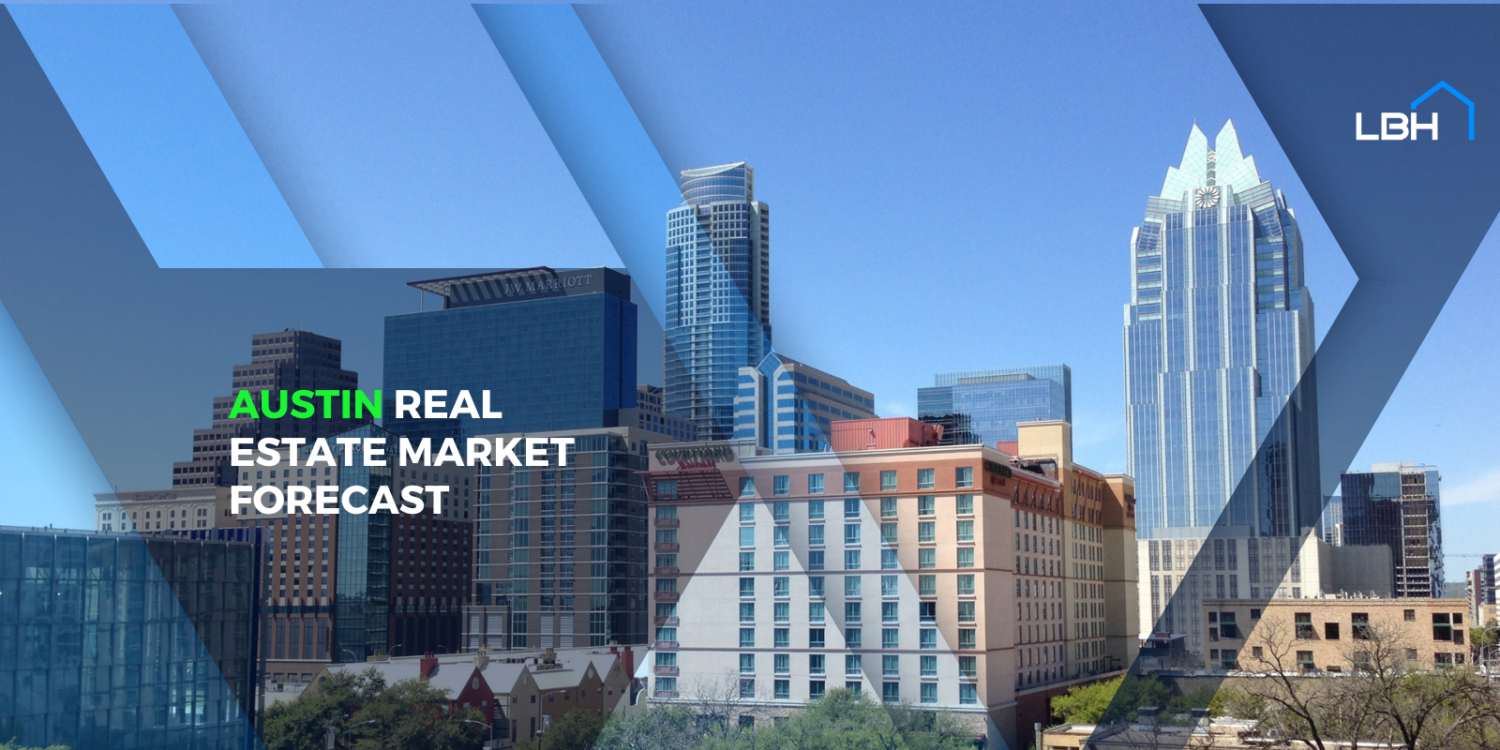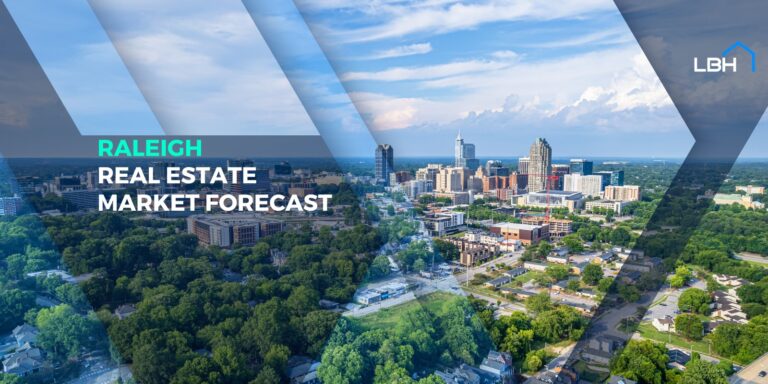We’re in the last quarter of 2023, and things are looking up for the Austin housing market. Home inventory is up, and median home prices are declining. The dream of owning a home is becoming more attainable for many homebuyers.
The Austin, Texas real estate market first showed signs of settling in 2021. This was a hopeful sign after the pandemic frenzy that ensued in 2020. Home prices were at an all-time high thanks to low interest rates and a high migration volume. Home inventories were fast dwindling, prompting bidding wars.
The Austin housing bubble showed no indications of deflating at the time.
However, the market cooled down, and the 2023 market is currently stable. There are still concerns about home affordability, with mortgage rates and inflation rising. Despite this, there is a chance that Austin’s housing market will end on a high note in 2024.
We should also consider factors influencing the city’s real estate market. These include:
- Austin’s thriving job market
- Population Growth
- Housing affordability
Let’s take a look at some of Austin’s property market predictions in 2023.
Austin Real Estate Trends 2024
Zillow released Austin’s market forecast in July 2023. It forecasted 2.5% growth over the next year. This suggests that the market may recover from the recent decline in Austin’s housing prices.
In September 2023, the Austin Board of REALTORS® also shared insightful data about the Austin-Round Rock Metropolitan Statistical Area housing market. Here are some key Austin real estate trends:
- The Austin housing stock is at its highest in eight years, with four months of inventory.
- Homes spent an average of 65 days on the market. This indicates a 24-day increase compared to September 2022.
- The percentage of residential properties sold in the Austin-Round Rock metro area fell by 18.2% from last year. Despite the increased inventory, this suggests the underlying issue of housing affordability.
- Active listings increased by 7.8% year on year, totaling 10,235. Pending listings increased by 7.7% to 2,320.
- Closed sales fell to 2,387, an 18.2% year-over-year fall. The median close price also fell by 4.3% year on year to $452,080. Both numbers point to a lack of home affordability and high mortgage rates.
- In Austin, the median sale price for residential homes dropped to $536,028. This indicated a 2.5% decline from September 2022.
- Pending sales increased by 2.6% year on year, totaling 628.
The above data suggests that the Austin TX housing market n 2023 is headed toward a promising finale.
How Will Rising Interest Rates Affect the Austin Real Estate Market in 2024?
Interest rates have recently reached a new high in the Austin-Round Rock metro area. The average 30-year fixed mortgage rate is 6.79%. There were speculations that the increase would affect the stability of Austin’s market. However, the market continues to display resilience, according to the Austin Board of Realtors data.
Even a half-point increase in mortgage rates can impact homeowners’ potential affordability. Prospective home buyers are facing difficulties in attaining a home in the current mortgage framework. Buyers who embarked on enthusiastic home searches have paused their home-buying search due to the rising mortgage rates.
This pause is disappointing for homebuyers. However, it has cooled the housing frenzy in the Austin area. July data from the Austin Board of Realtors reveals that the housing inventory increased due to the high rates. Active listings saw an upward trend. Properties spent an average of 37 days on the market last year. That figure has risen to 59 days this year.
High interest rates have also triggered a decline in the median sale price in Austin, Texas.
This indicates that by the end of 2023, prices will stabilize enough to rekindle property searches. It also implies that homebuyers can hold firm on their price. They can avoid bidding wars or paying more than the asking price.
The above factors suggest that the market may shift from a seller’s to a buyer’s market by the end of the year.
According to housing economist Dr. Clare Losey, high interest rates won’t dissuade potential buyers for long. As the median sale price drops, there is an emerging acceptance among buyers that mortgage rates will continue to rise.
With Austin’s economy and labor market strengthening, we can expect a strong housing market.
How Will Inflation Affect the Austin Housing Market in 2024?
Along with interest rates, inflation is a rising concern across the Austin MSA area. The influx of migrants from both out-of-state and statewide is one of the primary reasons behind this.
Families and young professionals are alsorelocating from more expensive and congested states such as California and New York. In comparison to these states, Austin’s property pricing is alluring.
Remote employees have also left their cities to settle in a more affordable housing market like Austin. Another attractive feature is the relatively low interest rates, prompting out-of-towners to invest in a sizable piece of land in the city.
Such high levels of in-migration in recent years have put a strain on the city’s infrastructure. However, as the pandemic property boom draws to a close and mortgage rates rise, demand for new homes is also drying up.
According to Zillow, the average house price in Austin has declined by 11.1% compared to last year. It currently stands at $543,380, thanks to sellers slashing Austin house prices to offset high mortgage rates.
Homebuyers waiting on the sidelines for prices to drop are considering buying. This confirms thepotential of the market transitioning from a seller’s to a buyer’s market by the end of 2023.
Nonetheless, experts advise buyers to proceed with care. The relationship between inflation and interest rates remains volatile. As a result, homebuyers should rethink their mortgage tactics. The Federal Reserve is considering a “soft landing.” This indicates that inflation will stabilize by the end of 2023. It could lead to another increase in mortgage rates.
How Will Job Growth Affect the Austin TX Housing Market in 2024?
The job market in Austin is flourishing. People are flocking to the Austin area in search of better opportunities. This has put a high demand on the city’s housing market.
However, Austin home values are still adjusting from the deviations over the last two years. There is a growth in the housing supply. This spells good news for both buyers and sellers. The average home is also staying on the market for longer.
This indicates that job growth in Austin has created a demand-driven housing market. The Austin property market will stay strong as long as this pace remains stable and mortgage rates remain consistent over the next year,
However, rising demand for housing may pose difficulties for working-class families. Finding affordable housing in Austin’s urban core has been challenging for this population segment. Local officials must assess this situation and ensure the housing supply matches diverse pricing.
More jobs are available in most sectors, but there are talks of layoffs looming over the tech industry. This hasn’t deterred Austin’s job market, nor has it affected housing demand.
In August 2023, the metropolitan region had an unemployment rate of 3.9%. This statistic is lower than the state average of 4.5%. It has remained stable over the last six months amid layoff talks and the impending market recession.
According to a 2020 report, Austin is one of the top five recession-proof cities in the U.S. In 2023, not much has changed. Austin’s job market is still one of the most resilient in the country. It will continue to fuel the city’s housing market.
How Will Tech Companies Moving to Austin Affect the Housing Market?
Austin’s housing market will see notable effects as its tech bubble expands. Property investors are having a field day because of Austin’s booming tech scene. Several big tech companies, including Apple, Tech, and Samsung, relocated their headquarters to Austin in 2023. IT businesses started to establish their company bases here in 2022. Other big players like Space X and Meta have announced plans to expand in the city.
This created excellent housing prospects for the newly relocated employee population. People moving from costlier locations such as Silicon Valley are finding value in investing in Austin’s more affordable property market. This is a signal for investors to maximize local investment opportunities.
The city’s transformation into a tech hub also brings other housing challenges to the forefront. Job growth will put undue pressure on the housing market. It will have to strive to meet the demands of the expanding population.
Affordability is also fast becoming an issue. Because of the tech boom, the median sale price increased nearly six times more than the median household income.
As the veil of the pandemic lifts, more individuals are working from the office. Employees of freshly established tech companies will want to live near their workplaces. This will encourage more people to buy condos and townhouses near urban areas. This means that Austin’s traditional homeowner landscape will change.
Because of the increased demand for homes in Austin, there will likely be an increase in innovative housing projects. This includes modular home and 3D-printed home options. Plans for smart container homes are also in the works.
How Will the New Tesla Factory in Austin Affect the Housing Market?
Tesla’s new factory setup will greatly impact Austin’s housing market.
In April 2022, Tesla launched Gigafactory Texas, a massive automotive manufacturing facility in Austin. According to Elon Musk, California’s limited space and unaffordable real estate prices prompted the move to the Lone Star State.
Despite growing housing median costs, Austin remains cheap compared to other markets like Los Angeles housing market or San Francisco housing market. Its refreshing lifestyle and absence of personal state income tax are tempting to several employees relocating here.
The Tesla Gigafactory currently has nearly 20,000 employees. There are ambitions to hire three times as many people in the coming year. Given the large migration of these personnel from both coasts of the country, the Austin housing market may soon face a crunch.
This influx may also further impact housing affordability. This is partly due to the Tesla factory’s average annual and median pay. With employees being able to pay more, there are concerns about Austin maintaining its affordable living concept.
What Are the Best Austin Neighborhoods to Buy a Home in 2024?
Austin’s vast landscape is home to diverse and unique districts. The city’s fast-growing population has a lot of options to choose their preferred location. Here are some of the best residential neighborhoods to consider when buying a home in 2023:
- Pflugerville
Pflugerville is one of Austin’s fastest-growing neighborhoods, with over 65,000 people. It is a North Austin outlying suburb with early German heritage.
Pflugerville is only a 30-minute drive from central Austin and San Antonio. Its easy accessibility makes it appealing to those working in Austin’s downtown region.
In recent times, Pflugerville has undergone positive development. It is home to over 20 park areas, providing opportunities for outdoor recreation. Despite its proximity to downtown Austin, it has a peaceful suburban vibe.
The public schools in this suburb are well-rated, making it a good place for families to settle. Pflugerville’s median house price is also considerably lower than central Austin’s, at $429,000. With a booming job market and low housing prices, Pflugerville is a neighborhood to watch out for.
- Cedar Park
Cedar Park is located on the outskirts of Austin, about a 20-minute drive from central Austin. This vibrant neighborhood is ideal for young workers who wish to enjoy Austin’s famed entertainment scene without the bustle of the city.
Cedar Park is also home to several tech and industrial manufacturing companies. This is an appealing suburb to invest in due to its high employment rate and proximity to Austin’s core business district.
Cedar Park also boasts good schools and is close to the University of Texas. Family-friendly attractions are nearby, making it a fantastic choice for growing families.
- Riverside
Riverside is a small neighborhood in southeast Austin with less than 10,000 people. It has a thriving rental market. It is home to young professionals and families. Austin’s downtown is just 10 minutes away by car or taxi.
Despite its proximity to the city area, it harbors a lovely green belt. Its focal point is Lady Bird Lake, a sprawling recreation area. There’s plenty of room for your kids to ride their bikes, go jogging, or enjoy a picnic by the lake.
Riverside also has an artsy streak. There are plenty of art galleries and cultural events happening in the neighborhood. You are never too far from coffee shops, restaurants, and cool bars.
- East Austin
Once upon a time, East Austin was one of the city’s most unsafe neighborhoods. Of late, this narrative is changing. It is now a lively neighborhood that shares the vibrant city scene of central Austin.
It has several historic homes and new housing projects on the horizon. This allows investors and homebuyers to invest in a location close to Austin’s downtown minus the high prices of central living. It also has a thriving cultural and gastronomic scene that appeals to the younger crowd.
- Central Austin
Central Austin is home to several eclectic neighborhoods, including downtown Austin. Some of its residential communities include:
- Highland Park
- Tarrytown
- Allandale
- Hyde Park
- Northwest Hills
It has a population of over 20,000 people. One of its key advantages is its walkability. The ratio of owners to renters is nearly equal. However, the median home price is $779,965, which is higher than in the other communities. This makes it less affordable for working-class families. Young workers wanting to live close to the city center can consider renting.
- Round Rock
Round Rock is a part of the Austin-Round Rock metro area. Money ranked it as one of the top places to live in the country. It is also one of the state’s top communities with good job growth projections.
The Dell Technologies headquarters is located here. This makes it a place brimming with opportunities and economic growth. The great news is that it is a suitable place to live both for growing families and young adults. Round Rock’s proximity to other Austin neighborhoods makes it a residential gem.
Round Rock’s property taxes and living expenses are lower than those in the surrounding area. A high-rated school system is the main draw for young families. It also has a consistent employment rate with enough jobs to go around. Public utilities are more affordable.
But the most appealing feature of all is the relatively affordable housing options in Round Rock. According to Zillow, the median home price in this neighborhood is $442,348.
Is Austin a Good Place to Invest in Real Estate in 2024?
Austin is no longer just your average pandemic boomtown. It has transformed into a thriving city rich with opportunities for residents. With the expansion of the tech industry on the horizon, Austin’s job market will continue to grow. This will result in a housing market driven by demand.
The low taxes in Austin compared to other U.S. major cities mean investors can expect a significant ROI from its property market.
Property values in Austin show an upward trend year-over-year. Austin’s properties have an annual appreciation rate of 11.47%, suggesting tremendous returns.
Austin’s population is growing as individuals relocate here for better career prospects and housing. You can earn steady property income as a landlord each month.
These factors, with the city’s steady economy, make Austin an appealing option for property investors.
- Related Article : Boulder housing trends 202
Promising Outlook for Austin’s Property Market
With consistent appreciation rates, a stable economy, and population growth, Austin’s property market is promising for investors. Both buyers and sellers must adjust to the shifting landscape. Buyers should:
- Be financially prepared
- Research local market trends
- Keep their expectations flexible
To handle the changing market conditions, sellers should:
- Focus on curb appeal
- Have patience, as it may take time to sell
- Practice realistic pricing tactics
The Austin housing market in 2023 is improving. There are promising chances for both buyers and sellers. While there are still issues, the city’s economic strength and evolving innovation sector will likely contribute to a healthy housing market in the coming year.












